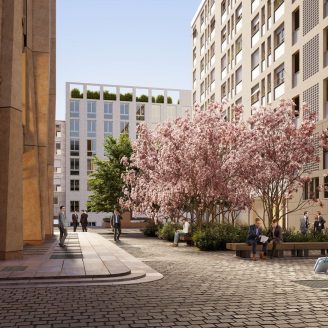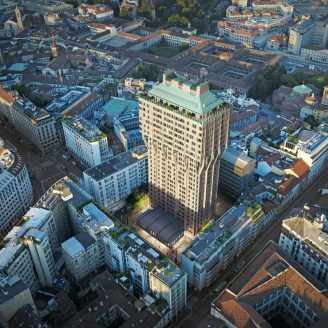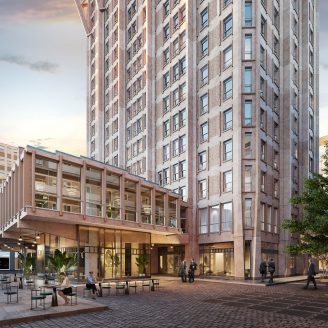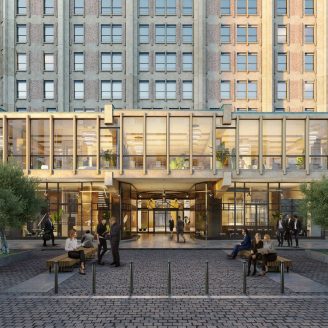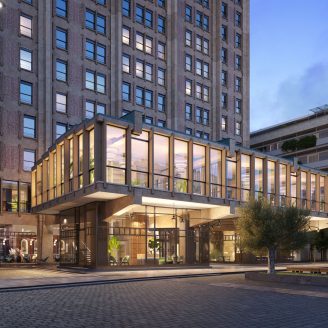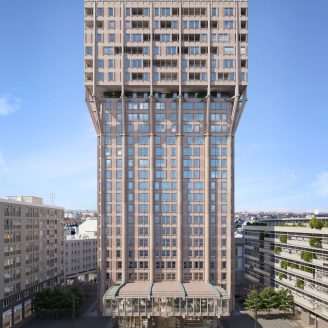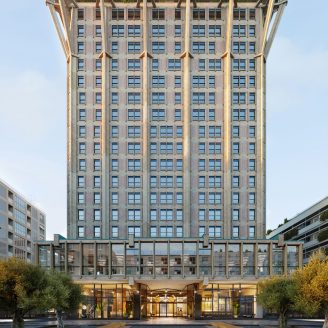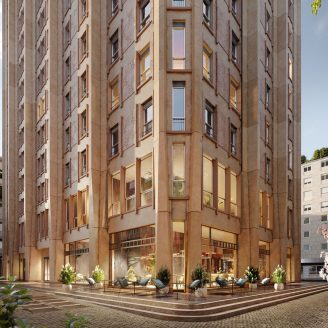After completing work on the façades and the restoration of the interiors, which is still in progress, Asti Architetti (with Hines as a developer) continues the redevelopment project of the historic Torre Velasca in Milan. In order to promote the relationship with the city, the architects present a renovation project for Piazza Velasca, conceived as a place of interchange between private and public.
Pedestrian access to the building, renovation of previously disused adjacent spaces, and street furniture will give back to the city a new open area that aims to give proper value to one of the symbols of Italian architecture with a space enriched with benches and green areas characterized by high ornamental features according to the changing seasons, set in underground tanks with trees, including olive trees and magnolias.
The project, overseen by Asti Architetti in collaboration with ARS Aedificandi, studio CEAS, ESA Engineering, and in an ongoing discussion with the Archaeological, Fine Arts and Landscape Superintendence of Milan, was developed in line with the highest standards of environmental sustainability and energy efficiency.
Paolo Asti explains:
“In designing Piazza Velasca, my hand was guided by the precise desire to return the Tower’s ground junction to the city, reinterpreting its relationship with the immediate surroundings. Torre Velasca has always been a landmark of Milan’s skyline, yet not part of the daily life of the Milanese, who have hardly had a direct, close relationship with their Tower. The ‘foot’ of the Tower has always been experienced by citizens as a “non-place” that inevitably did not allow for a proper osmotic relationship between the building and their neighborhood. Therefore, we designed a space respecting the Tower itself, a sort of ‘secular churchyard’ that at the same time would enhance its dimensional and architectural aspects, encouraging the right relationship of constant interweaving with the city. A resting place for the mind and heart but at the same time a place of identity, fruitful for the city, with its gaze turned toward the sky.”
The Piazza Velasca project was inspired by the principles of preserving and enhancing the square while respecting the Velasca Tower and the architectural context, providing a strong impetus for pedestrianization and improving environmental quality.
The paving will reveal the charm of some of the stone designs and materials that characterize many squares in Milan’s old town and will be made of large trachyte slabs, as an ideal extension of the ribbed pillars of the Velasca Tower in the four sectors surrounding the building, with total removal of the asphalt on the whole area. In particular, the red porphyry cubes known as “Sanpietrini” that are still Pantano and Corso di Porta Romana, will be reintroduced in the paving project as an element of reconnection of the entire block in line with the pedestrianization of Via Velasca. On the other hand, the sidewalks crowning the perimeter of the square will be clad and bordered by medium-sized granite slabs and curbs.
Apart from adorning the square, the areas undergoing new tree planting will be equipped with fixed benches made of dark-colored wood and steel. The reorganization of the spaces will include the City of Milan’s bike sharing service.
The Tower will thus fit fully into the contemporary concept of the “15-minute city” with streamlined mobility infrastructure and internet connectivity, taking advantage of the surrounding spaces as places to stop, relax, and even work.
Finally, the character of the new square will also be enhanced by the lighting design by ESA Enginnering, with a view to reducing energy consumption by achieving a high quality of light. The two BBPR-designed historic streetlamps will undergo restoration and conservation rehabilitation of all elements, while the other light sources will be equipped with state-of-the-art LEDs.
The square will be completed by early 2024.


